- Home
- Clive Cussler
The Sea Hunters
The Sea Hunters Read online
Clive Cussler - Sea Hunters
Synopsis:
A nonfiction work by the creator of Dirk Pitt, this book tells thirteen tales of searches for shipwrecks. The circumstances surrounding each are described in detail along with the searches. This book reads like a novel. Among the shipwrecks are the C.S.S. Hunley, a confederate submarine-the first to sink a ship in battle, The Leopoldville, a troop transport torpedoed by a German u-boat on Christmas eve, 1944 and the discovery of U-20, the german sub that sank the Lucitania in 1915.
Contents
NUMA Advisory Board of Trustees
Introduction
PART 1 The Steamboat Lexington
I Through by Daylight- 1840
II Enter NUMA- 1983
PART 2 The Republic of Texas Navy Ship Zavala
I A Sweet-Handling Ship 1836-1842
II Ship in a Parking Lot- 1986
PART 3 U.S.S. Cumberland and C.S.S. Florida
I Her Flag Still Flying- 1862
II She-Devil of the Confederacy-1864
III Where Did They Go?- 1980
IV Back with a Vengeance- 1982
PART 4 C.S.S. Arkansas They Can't Be Found if You Don't Look
I The Gauntlet-1862 Postscript
II Go Down to the Levee-1981144
Current List of National Underwater & Marine Agency
PART 5 Shipwreck Surveys and Discoveries
U.S.S. Carondelet Foreign Ships Discovered and Surveyed
Additional Sites Surveyed
I The River War
II Some Days You Can't Win-1982 Index
PART 6 The Confederate Submarine Hunley
I The Little Sub That Could... and Did-1864
II The Toughest Find of All- 1980
III Once More with Feeling- 1981
IV If at First You Don't Succeed- 1994
PART 7 The Lost Locomotive of Kiowa Creek
I Journey to Nowhere-1878
II One That Got Away-1989
PART 8 H.M.S. Pathfinder, U-21, and U-20
I Death from the Depths- 1914
II Down in Eighteen Minutes-1915
III I'd Rather Be in Hawaii-1984
PART 9 The Troop Transport Leopoldville
I Silent Night, Deadly Night 1944
II Curses, Foiled Again- 1984
NUMA Advisory Board of Trustees I Clive Cussler, Chairman Colonel Walter Schob Admiral William Thompson Michael Hogan Eric Schonstedt Commander Donald Walsh Kenhelm Stott, Jr.. Douglas Wheeler Craig Dirgo Robert Esbenson
Deceased
Wayne Gronquist, President Dana Larson William Shea Dr. Harold Edgerton Clyde Smith Peter Throckmorton Tony Bell. Dirk Cussler Barbara Knight
Introduction
It's said that Jules Verne wrote Around the World in Eighty Days without ever leaving Paris. He seldom stepped out of the room where he created the most imaginative novels the world has enjoyed. Most fiction authors, when I ask them what interests they have besides writing, look at me like my head is lopsided. They can't believe there are other pursuits in life beyond creating plots and characters, promoting their books, arguing with editors, or demanding better deals from their literary agents.
Their lives are entwined around what comes out of their word processors.
A reporter who interviewed me several years ago wrote that I "follow the beat of a drummer playing with a marching band in a field on the other side of town." I suppose that's true. Feeding my readers adventure tales based on a devil-may-care character by the name Dirk Pitt is only one chapter of my existence. I'm addicted to the challenge of the search, whether it's for lost shipwrecks, airplanes, steam locomotives, or people. I also collect and restore classic and vintage automobiles. If it's old, I'm into it.
There is a piece of me in Dirk Pitt and a slice of him in me.
We're both about six feet three. His eyes are greener than mine, and he certainly enthralls the ladies more than I ever did. We have the same taste for adventure, although his escapades are far more extreme than mine. I never raised the Titanic, for example. Nor have I saved the life of the President or found a great hoard of Inca gold at the end of an underground river.
I have, however, attempted some crazy things besides tramping through humid backcountry looking for old cannons or being tossed around a small boat during a Force 8 storm while searching for a sunken submarine. Like riding a bicycle over the Rocky Mountains and through the deserts to California when I turned fifty, taking the stick of a glider at fifty-five, and bungee jumping at sixty. I'm thinking of sky diving on my sixty-fifth.
How did this attempt to mirror fantasy with life begin?
Perhaps you remember me. I was the kid in your high school algebra class who stared out the window while the teacher lectured on fractions.
I was lost in another time, a million miles away, manning a cannon on John Paul Jones's ship, the Bonhomme Richard, charging up Cemetery Ridge with Pickett's division, or reversing the tide at the Little Big Horn and saving Custer and his 7th Cavalry. When called upon to recite, I could only stare at the floor like an amnesiac and mutter an answer so utterly out of context that the teacher thought I had wandered into her class by mistake.
I was lucky growing up when and where I did. Within four blocks of my family's middle-class, 1940s home in Southern California, there were five neighborhood boys my own age who had imaginations as varied as mine. Together, we built treehouses and clubhouses, dug caves, constructed a ship out of scrap wood in a vacant lot, constructed miniature streets and buildings out of mud and wooden molds, and devised ghostly scenes in my father's garage on Halloween. The Little Rascals had nothing on us. Only when five o'clock rolled around did we dash home to Turn on the radio and listen to the adventures of Jack Armstrong, the ' All-American Boy, picturing ourselves slogging through the Congo jungles at his side.
Sea stories had a particular allure to my wandering mind. I was always immersed in books describing ship-to-ship battles, which included the ironclads of the Civil War, the fights of famous American frigates against the British in the War of 1812, and the Napoleonic sea wars of Nelson, especially the fictional accounts of Horatio Hornblower by C. S. Forester.
Since I'm a Cancer, I've always had an affinity for water. The first time I looked upon the Pacific Ocean I was six years old. I ran directly into the surf, only to be promptly deposited back on the beach by a breaker. Undaunted, I ran back in over my head. Not a bright move because I had no idea that you were supposed to know how to swim.
I recall opening my eyes and marveling at the blurred world beneath the surface. I even saw a small fish before it dawned on me that I couldn't breathe. My father, since it was the only decent thing to do, frantically groped around in the depths until he found me and pulled me back into the atmosphere. My mother, fearing a repeat of my underwater ballet, quickly signed me up at the nearest public pool for swimming lessons.
Because I was an only child, I made up games to play. One was with poker chips stacked in the shape of warships. Some hulls had a row of single chips, others two and three rows. The size of the cannon was dictated by the strength of rubber bands. Naturally, the rubber slings of my fleet always blew the chips of the enemy fleet all over the linoleum floor of my mother's kitchen and dining areas. The same basic concept was used in the bathtub, where I floated ships folded from newspaper and then dive-bombed them with marbles until they either soggily disintegrated or sank under the weight of the shooters and aggies that failed to penetrate their thin decks.
I did all the crazy things kids did in the leisurely days before television, like riding my bicycle down a hill and off a small cliff into the tree branches below, jumping off the roof of a house under construction into a sandpile, or building a makeshift raft and sailing down a rushing
stream during a rainstorm. There must be guardian angels somewhere up there who watch over crazy, daredevil boys.
Amazingly, I never broke a bone until I passed the age of fifty.
Since then, I've suffered one fractured ankle while jogging; two cracked vertebrae, when thrown out of a jeep careering over a beach while I held a metal detector, looking for a buried shipwreck; and six cracked ribs, two of them surfing and one on a mountain bike. The others came from stupid accidents.
One thing I learned early is that adventure can come cheap. In college, a close friend, Felix Duprey, and I loaded up his 1939 Ford convertible and set out one summer on a drive around the country. In three months we covered over thirteen thousand miles and thirty-six states. We slept in bandstands in Vermont, railroad boxcars in Texas, and in the bushes beside the nation's capitol in Washington, D.C. The entire trip cost me only $350. We returned home just in time to enlist in the Air Force after the outbreak of the "police action" in Korea, more out of boredom with school than any great patriotic fervor.
I have never forgotten Felix, Jack Hawkins, and me, sitting in the recruiting office looking at each other and repeating over and over, "I'll go if you go," or "If you join, I'll join." I can't recall who raised his hand first and took the oath to defend the country from foreign invaders, but I have never forgiven him.
Despite my applying for aerial photography or the intelligence department, some sneaky sergeant in the Training Command found out I was a California hot-rodder and sent me to aircraft engine school.
After my graduation, the Air Force demanded I be attached to Hickam Field, Hawaii, to work on mammoth twenty-eight-cylinder radial engines mounted on C-97 Boeing Stratocruisers. These were large propellerdriven aircraft the Air Force used as transports to fly critical personnel and supplies to Korea before airlifting the wounded back to hospitals in the States.
During the three years I was stationed on Oahu, my buddies Dave Anderson and Al Giordano, a gritty and witty Italian who was the model for Al Giordino in my books, and I explored the inner jungles of the island, searching for lost aircraft, ancient Hawaiian burial caves, and missing people. I recall finding none.
We also became early diving fanatics. This was in late 1951 and there was little in the way of underwater equipment. We made our own camera cases, spear guns, and floats. My first mask was a weird affair made in France that covered the entire face, with two snorkels that contained Ping-Pong balls to halt incoming water. As I recall, it was made of gum rubber. The early commercially produced dive fins fit your feet like bedroom slippers with flaps.
We hit the water every chance we had, exploring the bays and coves around Oahu. I also took my gear and dove around Midway and Wake islands during refueling stops on flights to Tokyo. Those were the days when you seldom ran across another diver.
Wanting to go deeper, my buddies and I ordered what we were told was the first tank and regulator to be shipped to Honolulu. After picking it up in a crate from the sporting-goods store, we rushed back to an aircraft maintenance hangar, where we pumped two hundred pounds of stale air from a compressor into the tank. Then we took turns diving off a reef in twenty feet of water. Those were the days before scuba certification by qualified instructors, and it was a wonder we didn't suffer any number of diving maladies. Air embolisms and decompression times were vague terms and were not considered by most sport divers in 1951.
Upon returning to civilian life, I tried college again, but found that nothing had changed. The same musty classroom smell still nauseated me and, besides that, I had no thought of what I wanted to be when I grew up. Drawn back to the smell of oil and gasoline, my old school chum, Dick Klein, and I bought a gas station just off the San Bemardino Freeway six miles outside Los Angeles, and we operated it for almost four years.
On weekends, Dick and I used to travel around the deserts of Southern California in an old 1948 Mercury convertible that we stripped before installing oversized truck tires on the wheels. A shame. In pristine condition today that car would be worth the price of a new one.
We searched for lost gold mines, lost ghost towns, and any sign of an artifact that looked as if it had been forgotten by old prospectors or the early Spanish explorers. Success usually eluded us, but we did have a great time shooting antique rifles at rocks in the distance.
I finally became a certified diver after quitting a highfalutin advertising job in Hollywood to work as a clerk with a small chain of dive shops in Orange County. There was a method to my madness, however, as I had decided to write sea stories, and what better place to launch my career as a writer than from behind the counter of a dive shop? Don Spencer, Ron Merker, and Omar Wood, legendary divers and owners of the Aquatic Center dive stores, wondered which part of the moon I'd dropped from when I applied for a job that paid $400 a month after making $2,000 a month as creative director for a national advertising agency. But shrewd and canny guys that they were-Spencer has since passed on-they put aside their doubts and hired me. They became good friends and I've always owed them all a great debt of gratitude. I fondly recall when Merker certified me with a Los Angeles County card. He wasn't awfully impressed with my diving abilities even after I reminded him that the Red Baron, Manfred Von Richthofen, who shot down eighty Allied planes in World War I, had nearly flunked out of flight school.
With great trepidation, he sent me to Catalina as divemaster on a chartered boat with twenty other divers. Staring up at the kelp from the seafloor as it spirals toward the surface is a sight you'll always remember. I know I'll never forget how the sport divers attacked the food spread on the deck like a school of malnourished barracuda.
Using my devious talents for promotion, I pulled off all types of crazy stunts to increase business, endeavors that doubled sales inside six months. Besides standing a bikini-clad mannequin out on the curb in front of the store, painting an aircraft belly tank fluorescent orange and installing it on the roof after filling it with more bikini-clad mannequins, I began phrasing strange witticisms on a theater marquee in the parking lot. One traffic stopper, as I remember, read, KEEP AMERICA GREEN, BAN LOBSTERS FROM THE HIGHWAYS. I always felt smug about the fact that we far outsold Mel Fisher's dive shop in Manhattan Beach.
Of course, Fisher got the last laugh after he found the treasure-laden Spanish galleon Atocha.
I also became a legend of sorts when I took over the recorded dive report that divers phoned for water conditions before heading into the deep. Instead of the old austere "This is the Aquatic Center dive report," in a droning voite that murmured, "The surf is three to four feet, the water temperature is seventy-six degrees, and the visibility is ten feet," I came on and said, "Hi, ho, divers, this is your daredevil darling of the dismal depths, Horace P. Quagmire, once again with the latest report on diving conditions." I even threw in recipes for abalone. And, not one to let an opportunity pass, I ended the report by mentioning several items of merchandise that happened to be on sale. Don't ask me why, but they loved it. California divers still ask me to autograph their books with Horace P. Quagmire.
When business slowed in midafternoon, I sat at a card table in the back of the store and wrote a book called The Mediterranean Caper on a portable typewriter. After making up my mind that I had at last found my niche in life, and signing with New York literary agent Peter Lampack, I sadly left the Aquatic Center dive shops to pursue my new career as a writer. Spencer, Merker, Wood, and I shook hands all around, and they were kind enough to present me with an orange-dial Dora dive watch that I've treasured for over twenty years. I wrote all three of them in as characters in Raise the Titanic!, which became a best-seller and a terrible movie.
Suddenly, and quite unexpectedly, with the success of Raise the Titanic!, I now had the time and funds to search for lost shipwrecks.
In December of 1977, I read in one of the books written by Peter Throckmorton, dean of American marine archaeology, that a gentleman in England, Sidney Wignall, was following up leads to John Paul Jones's famous Revolutionary Wa
r ship, the Bonhomme Richard, which sank after an epic battle off Flamborough Head in the North Sea.
Having studied the famous fight where the underdog shouted, "I have not yet begun to fight," when his ship was shot to shreds, I bit the hook when I learned that Wignall was casting about for money to launch a search.
My British publishers tracked down Wignall, and I called him. A peppery Welshman, he assumed that I was some kind of deranged con man when out of the blue I offered to fund an expedition to locate the Richard. Reasonably satisfied that I didn't wear a Napoleon hat and a straitjacket, we arranged for a meeting to discuss the basics for organizing a search expedition, not the least of which was the budget.
In this case a cool $60,000.
The final cost was $80,000.
Sidney had discovered a Spanish Armada galleon and searched for Sir Francis Drake's lead coffin off Portobelo in Panama. He was a top-notch historian, but organizational know-how was an enigma to him.
I should have been a bit more cautious of striking off into the unknown, but with shipwreck fever mounting to a heated pitch, I plunged in up to my ears. I now know where the term "babe in the woods" comes from.
The expedition later veered two degrees beyond a fiasco. Tons of unnecessary equipment, including a decompression chamber, were loaded aboard an old World War II British minesweeper used for geological survey by an outfit I suspected of operating as the Shagnasty barn Door and Oil Company. The Flying Dutchman sailed in a better ship than this one. Its geriatric diesel engine broke down with agonizing regularity three times a day. The ship's crew would have made a saloon full of heavy-metal bikers hold their noses and run for the exits. These guys thought bath was a city in England. There was one crewman who for some inexplicable reason has never left my Mind. His name was Gonzo. I recall the name because it was tattooed on his forehead. The boat was called the Keltic Lord. Being a dumb American, I always thought Keltic was spelled with a C.

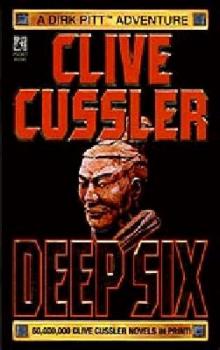 Deep Six
Deep Six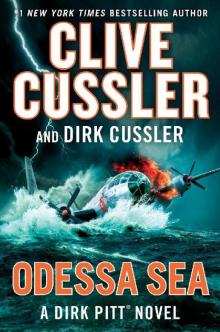 Odessa Sea
Odessa Sea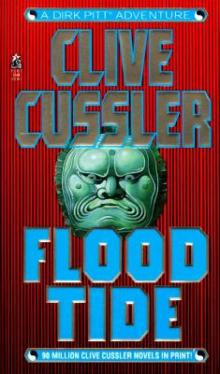 Flood Tide
Flood Tide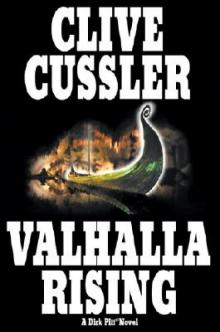 Valhalla Rising
Valhalla Rising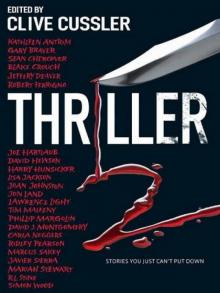 Thriller 2
Thriller 2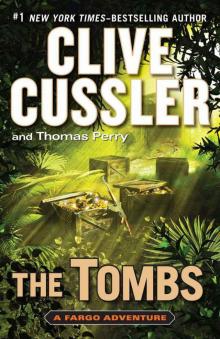 The Tombs
The Tombs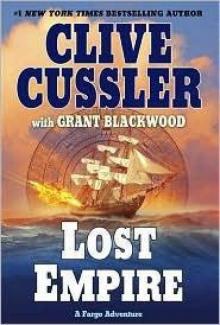 Lost Empire
Lost Empire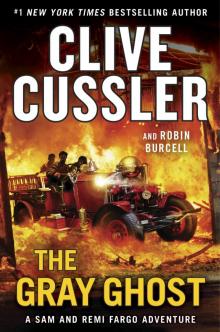 The Gray Ghost
The Gray Ghost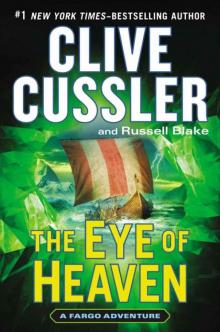 The Eye of Heaven
The Eye of Heaven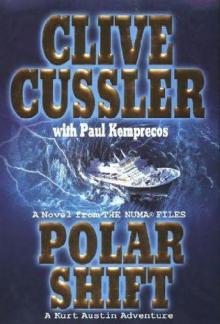 Polar Shift
Polar Shift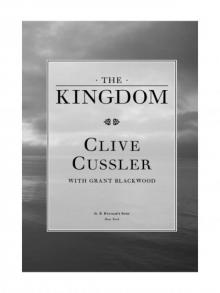 The Kingdom
The Kingdom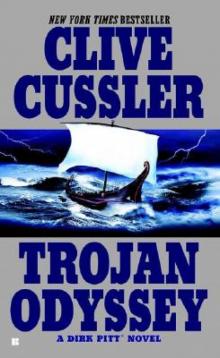 Trojan Odyssey
Trojan Odyssey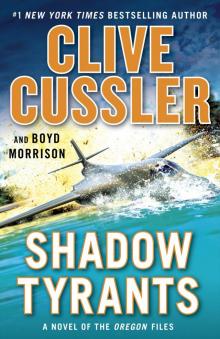 Shadow Tyrants
Shadow Tyrants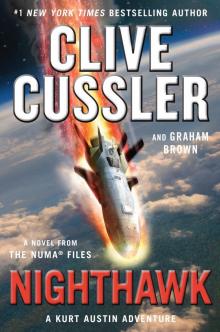 Nighthawk
Nighthawk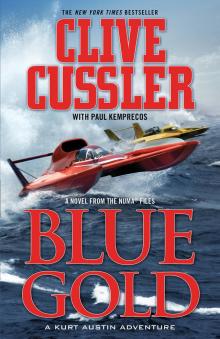 Blue Gold
Blue Gold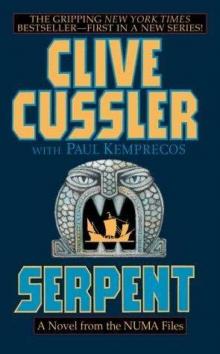 Serpent
Serpent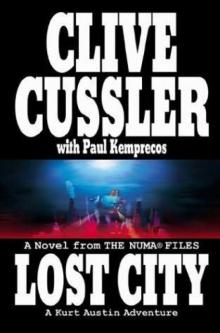 Lost City
Lost City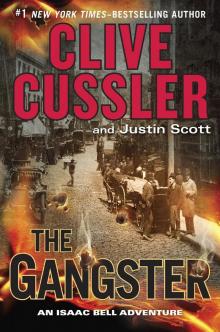 The Gangster
The Gangster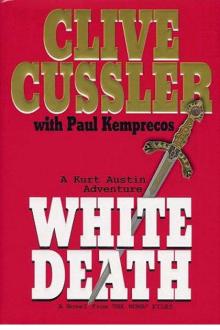 White Death
White Death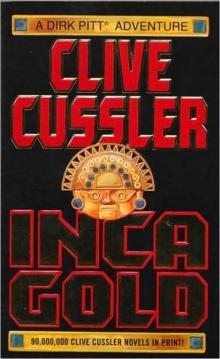 Inca Gold
Inca Gold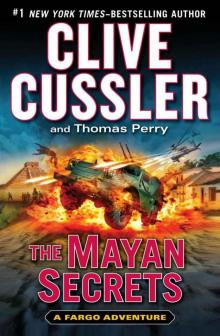 The Mayan Secrets
The Mayan Secrets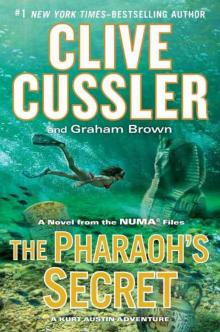 The Pharaoh's Secret
The Pharaoh's Secret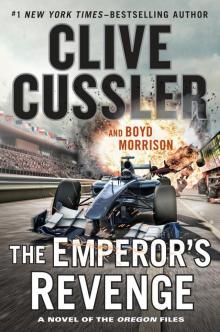 The Emperor's Revenge
The Emperor's Revenge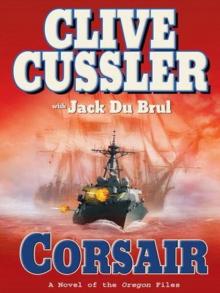 Corsair
Corsair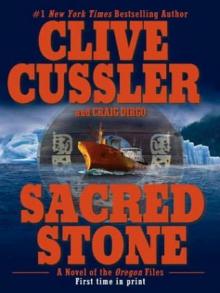 Sacred Stone
Sacred Stone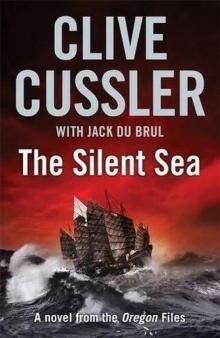 The Silent Sea
The Silent Sea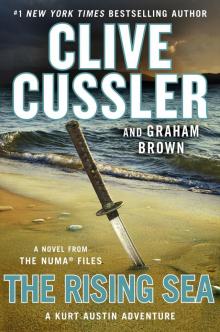 The Rising Sea
The Rising Sea Black Wind
Black Wind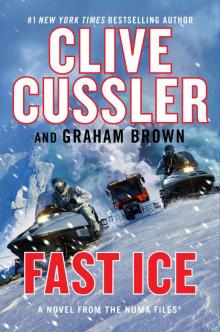 Fast Ice
Fast Ice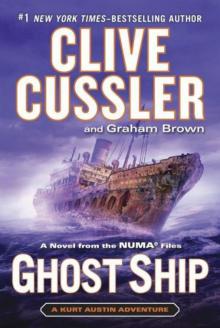 Ghost Ship
Ghost Ship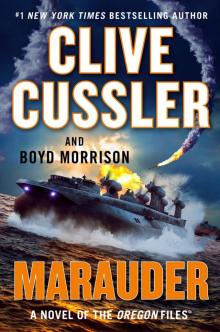 Marauder
Marauder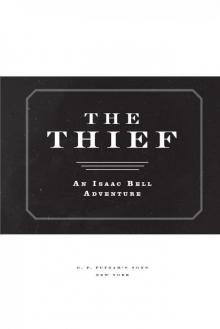 The Thief
The Thief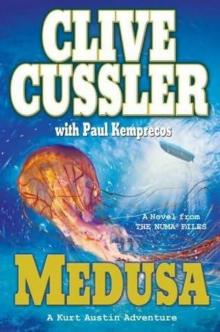 Medusa
Medusa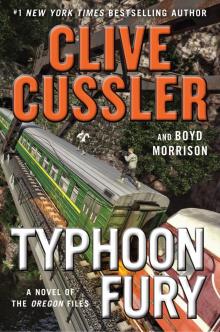 Typhoon Fury
Typhoon Fury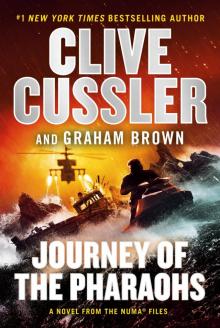 Journey of the Pharaohs
Journey of the Pharaohs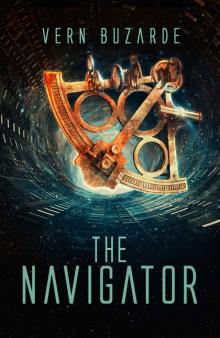 The Navigator
The Navigator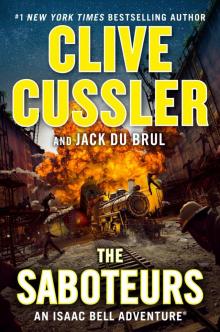 The Saboteurs
The Saboteurs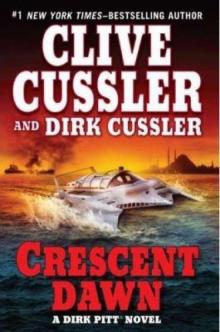 Crescent Dawn
Crescent Dawn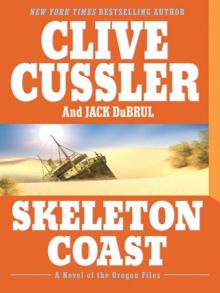 Skeleton Coast
Skeleton Coast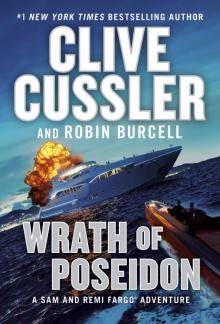 Wrath of Poseidon
Wrath of Poseidon The Mediterranean Caper
The Mediterranean Caper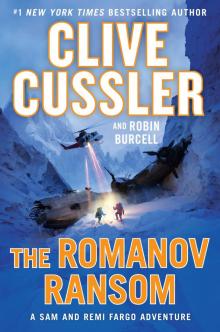 The Romanov Ransom
The Romanov Ransom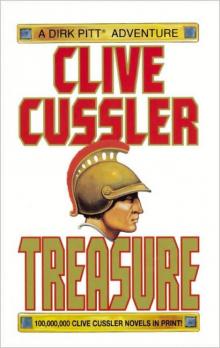 Treasure
Treasure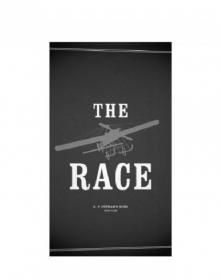 The Race
The Race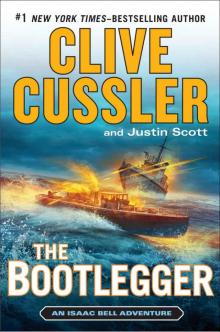 The Bootlegger
The Bootlegger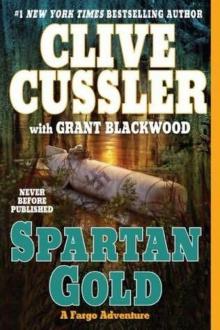 Spartan Gold
Spartan Gold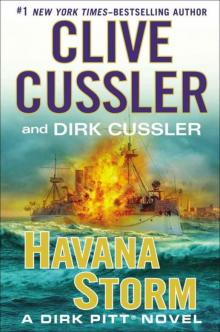 Havana Storm
Havana Storm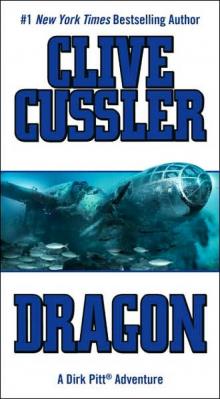 Dragon
Dragon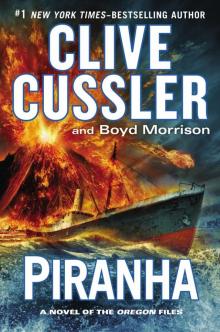 Piranha
Piranha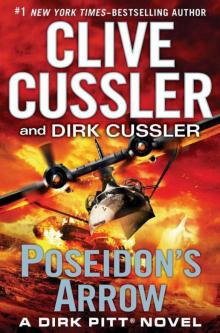 Poseidon's Arrow
Poseidon's Arrow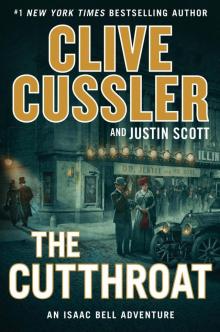 The Cutthroat
The Cutthroat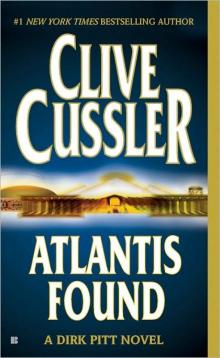 Atlantis Found
Atlantis Found The Jungle
The Jungle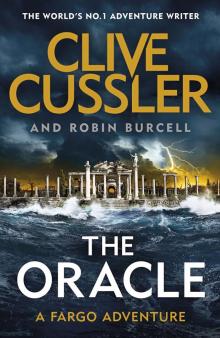 The Oracle
The Oracle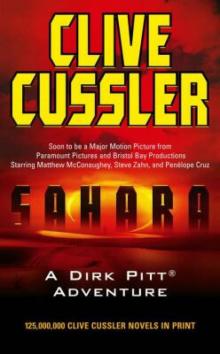 Treasure / Dragon / Sahara: Clive Cussler Gift Set
Treasure / Dragon / Sahara: Clive Cussler Gift Set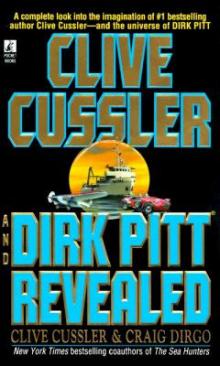 Clive Cussler and Dirk Pitt Revealed
Clive Cussler and Dirk Pitt Revealed The Sea Hunters
The Sea Hunters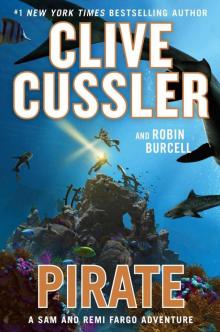 Pirate
Pirate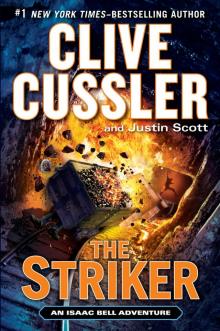 The Striker
The Striker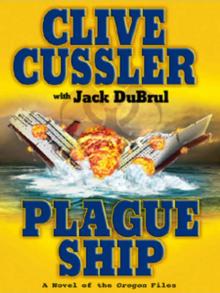 Plague Ship
Plague Ship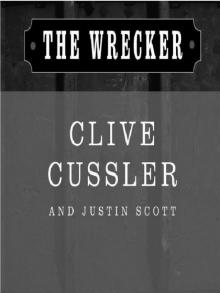 The Wrecker
The Wrecker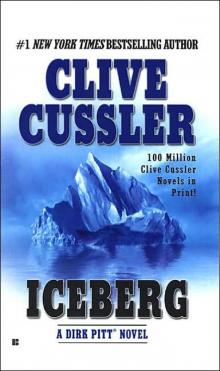 Iceberg
Iceberg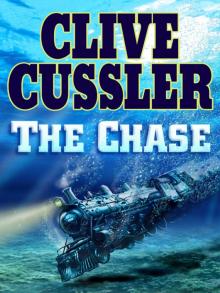 The Chase
The Chase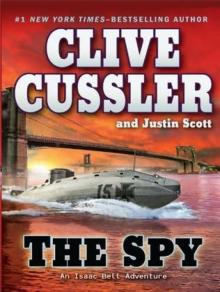 The Spy
The Spy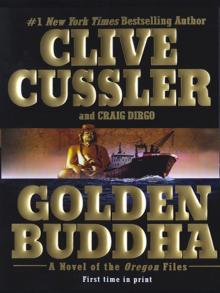 Golden Buddha
Golden Buddha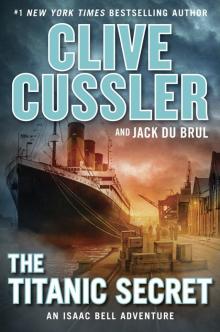 The Titanic Secret
The Titanic Secret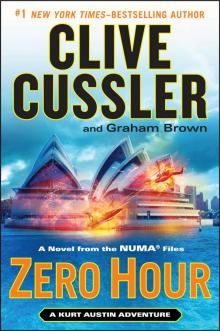 Zero Hour
Zero Hour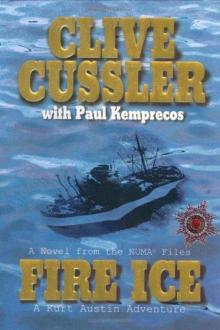 Fire Ice
Fire Ice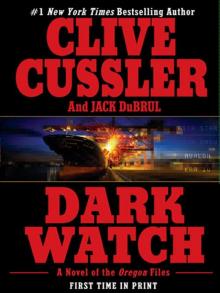 Dark Watch
Dark Watch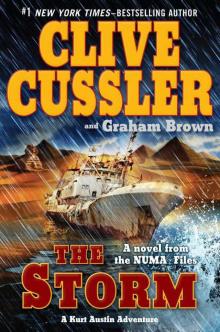 The Storm
The Storm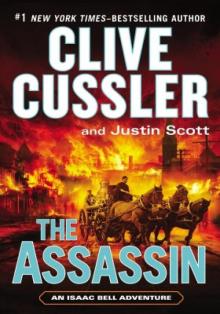 The Assassin
The Assassin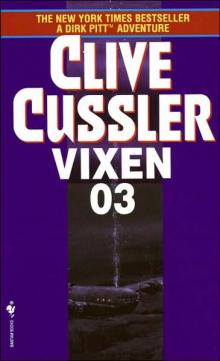 Vixen 03
Vixen 03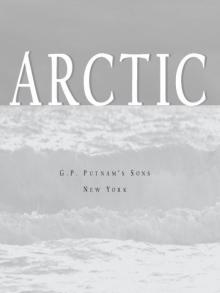 Arctic Drift
Arctic Drift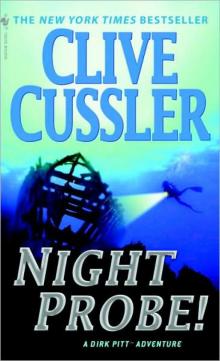 Night Probe!
Night Probe!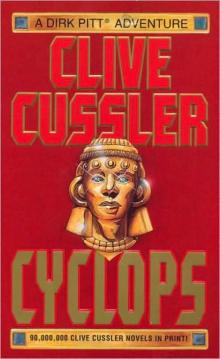 Cyclops
Cyclops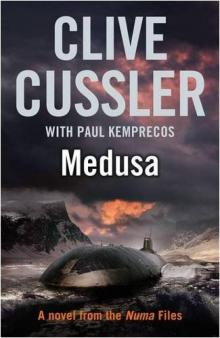 Medusa nf-8
Medusa nf-8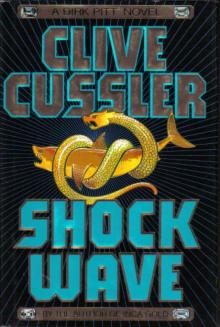 Shock Wave dp-13
Shock Wave dp-13 Marauder (The Oregon Files)
Marauder (The Oregon Files)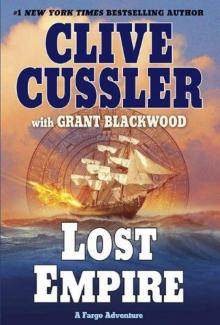 Lost Empire fa-2
Lost Empire fa-2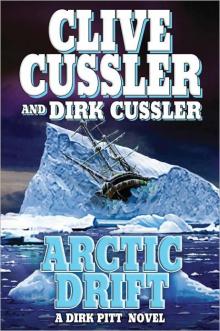 Arctic Drift dp-20
Arctic Drift dp-20 Dirk Pitt 22 - Poseidon's Arrow
Dirk Pitt 22 - Poseidon's Arrow Treasure of Khan dp-19
Treasure of Khan dp-19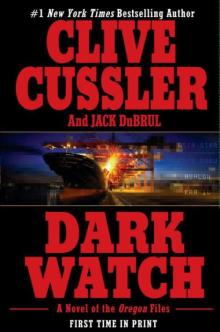 Dark Watch of-3
Dark Watch of-3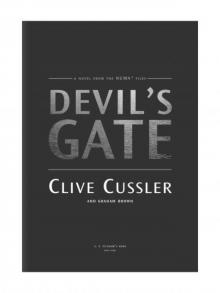 Devil's Gate
Devil's Gate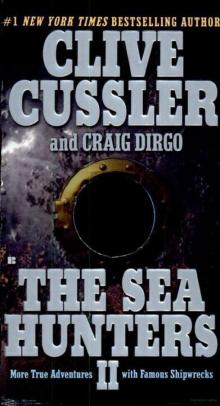 The Sea Hunters II: More True Adventures with Famous Shipwrecks
The Sea Hunters II: More True Adventures with Famous Shipwrecks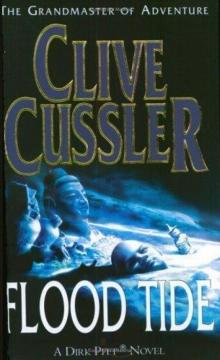 Flood Tide dp-14
Flood Tide dp-14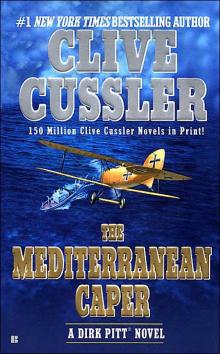 The Mediterranean Caper dp-2
The Mediterranean Caper dp-2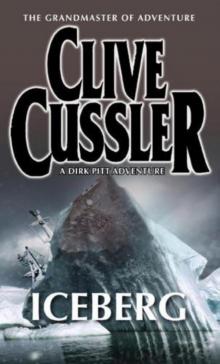 Iceberg dp-3
Iceberg dp-3 Sahara dpa-11
Sahara dpa-11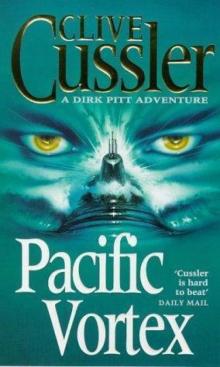 Pacific Vortex! dp-1
Pacific Vortex! dp-1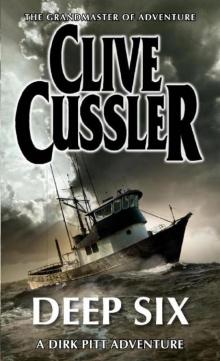 Deep Six dp-7
Deep Six dp-7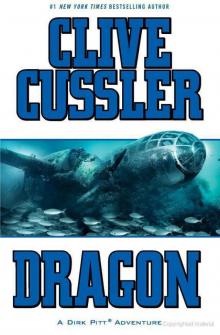 Dragon dp-10
Dragon dp-10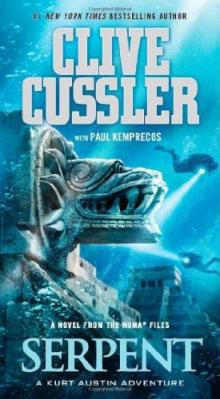 Serpent nf-1
Serpent nf-1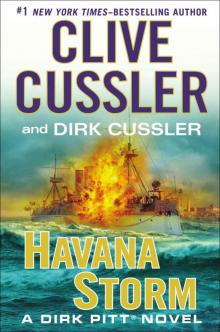 Havana Storm (Dirk Pitt Adventure)
Havana Storm (Dirk Pitt Adventure)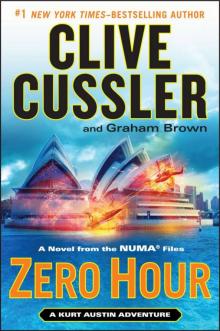 Zero Hour nf-11
Zero Hour nf-11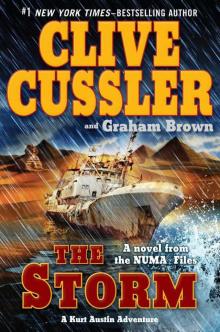 The Storm nf-10
The Storm nf-10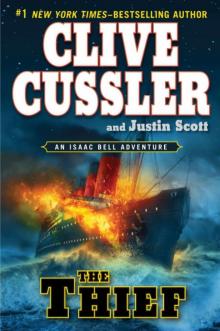 The Thief ib-5
The Thief ib-5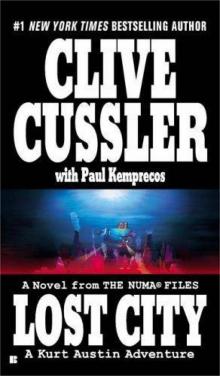 Lost City nf-5
Lost City nf-5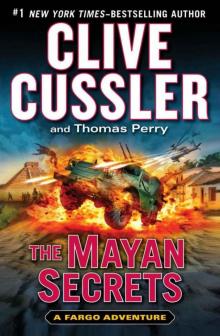 The Mayan Secrets fa-5
The Mayan Secrets fa-5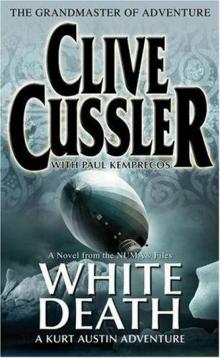 White Death nf-4
White Death nf-4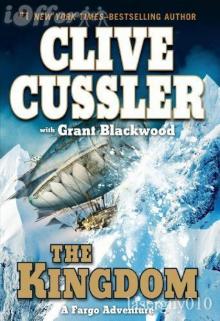 The Kingdom fa-3
The Kingdom fa-3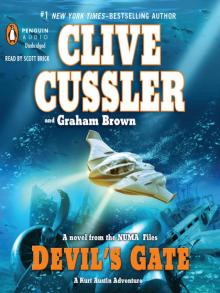 Devil's Gate nf-9
Devil's Gate nf-9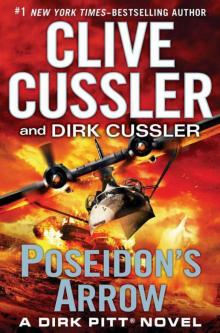 Poseidon's Arrow dp-22
Poseidon's Arrow dp-22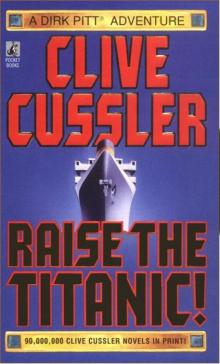 Raise the Titanic dp-4
Raise the Titanic dp-4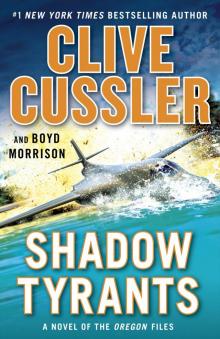 Shadow Tyrants--Clive Cussler
Shadow Tyrants--Clive Cussler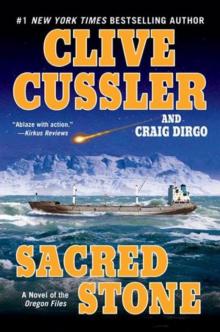 Sacred Stone of-2
Sacred Stone of-2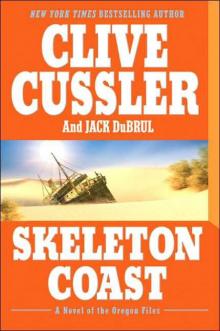 Skeleton Coast tof-4
Skeleton Coast tof-4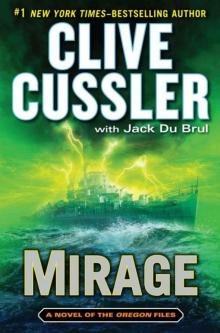 Mirage tof-9
Mirage tof-9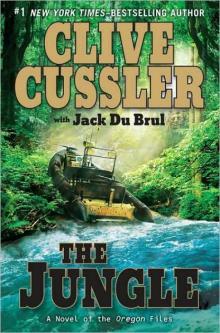 The Jungle of-8
The Jungle of-8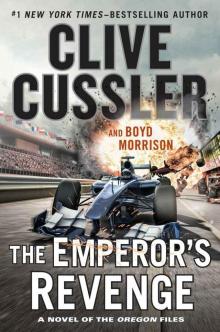 The Emperor's Revenge (The Oregon Files)
The Emperor's Revenge (The Oregon Files)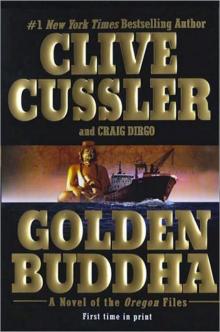 Golden Buddha of-1
Golden Buddha of-1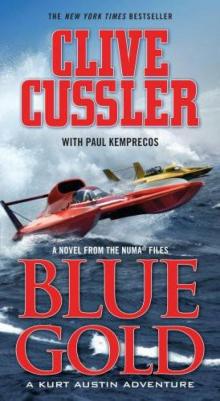 Blue & Gold
Blue & Gold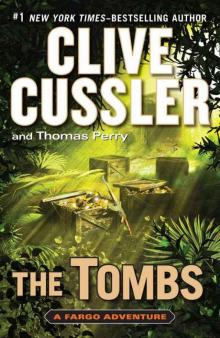 The Tombs fa-4
The Tombs fa-4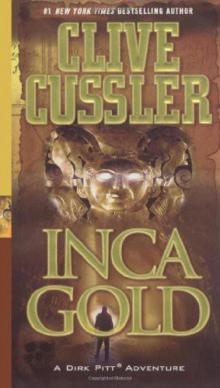 Inca Gold dp-12
Inca Gold dp-12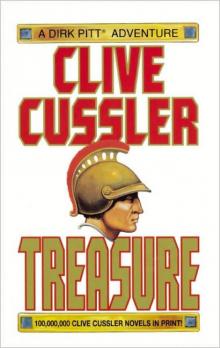 Treasure dp-9
Treasure dp-9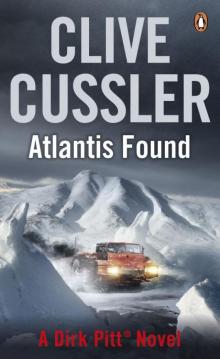 Atlantis Found dp-15
Atlantis Found dp-15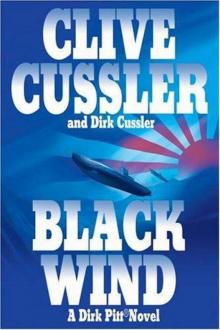 Black Wind dp-18
Black Wind dp-18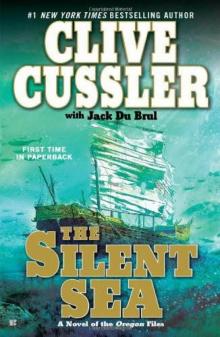 the Silent Sea (2010) tof-7
the Silent Sea (2010) tof-7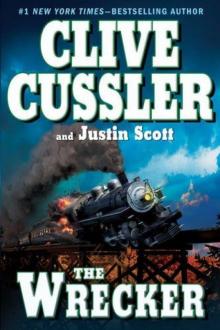 The Wrecker ib-2
The Wrecker ib-2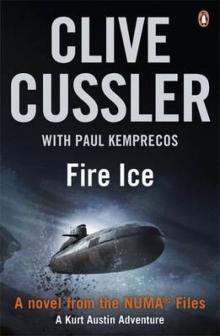 Fire Ice nf-3
Fire Ice nf-3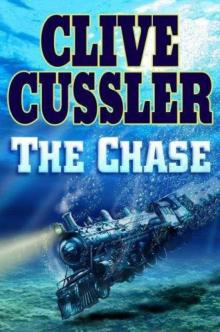 The Chase ib-1
The Chase ib-1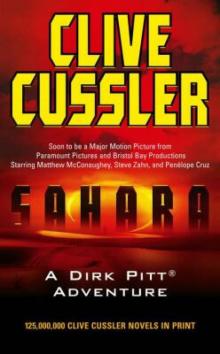 Sahara
Sahara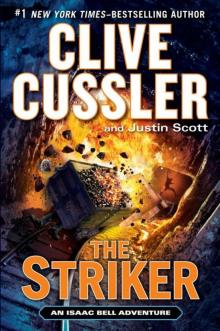 The Striker ib-6
The Striker ib-6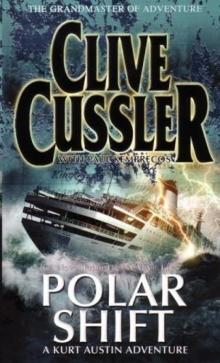 Polar Shift nf-6
Polar Shift nf-6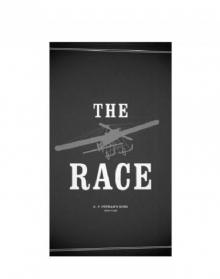 The Race ib-4
The Race ib-4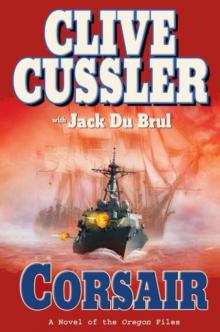 Corsair of-6
Corsair of-6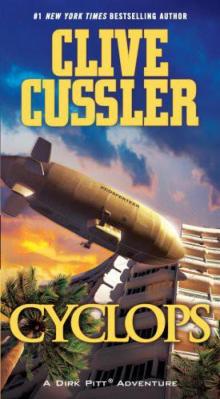 Cyclops dp-8
Cyclops dp-8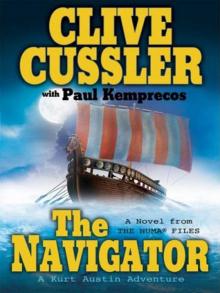 The Navigator nf-7
The Navigator nf-7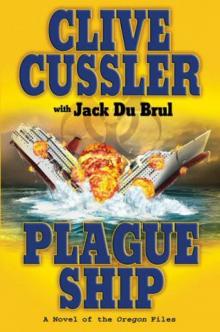 Plague Ship tof-5
Plague Ship tof-5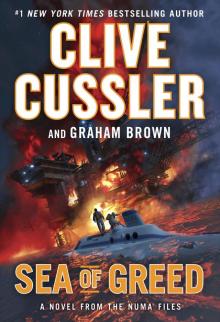 Sea of Greed
Sea of Greed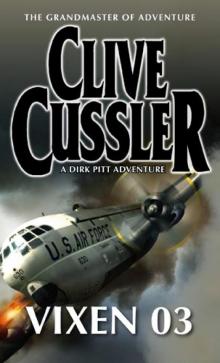 Vixen 03 dp-5
Vixen 03 dp-5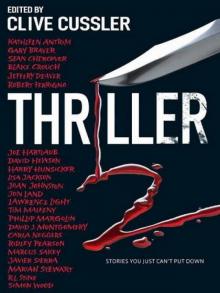 Thriller 2: Stories You Just Can't Put Down
Thriller 2: Stories You Just Can't Put Down